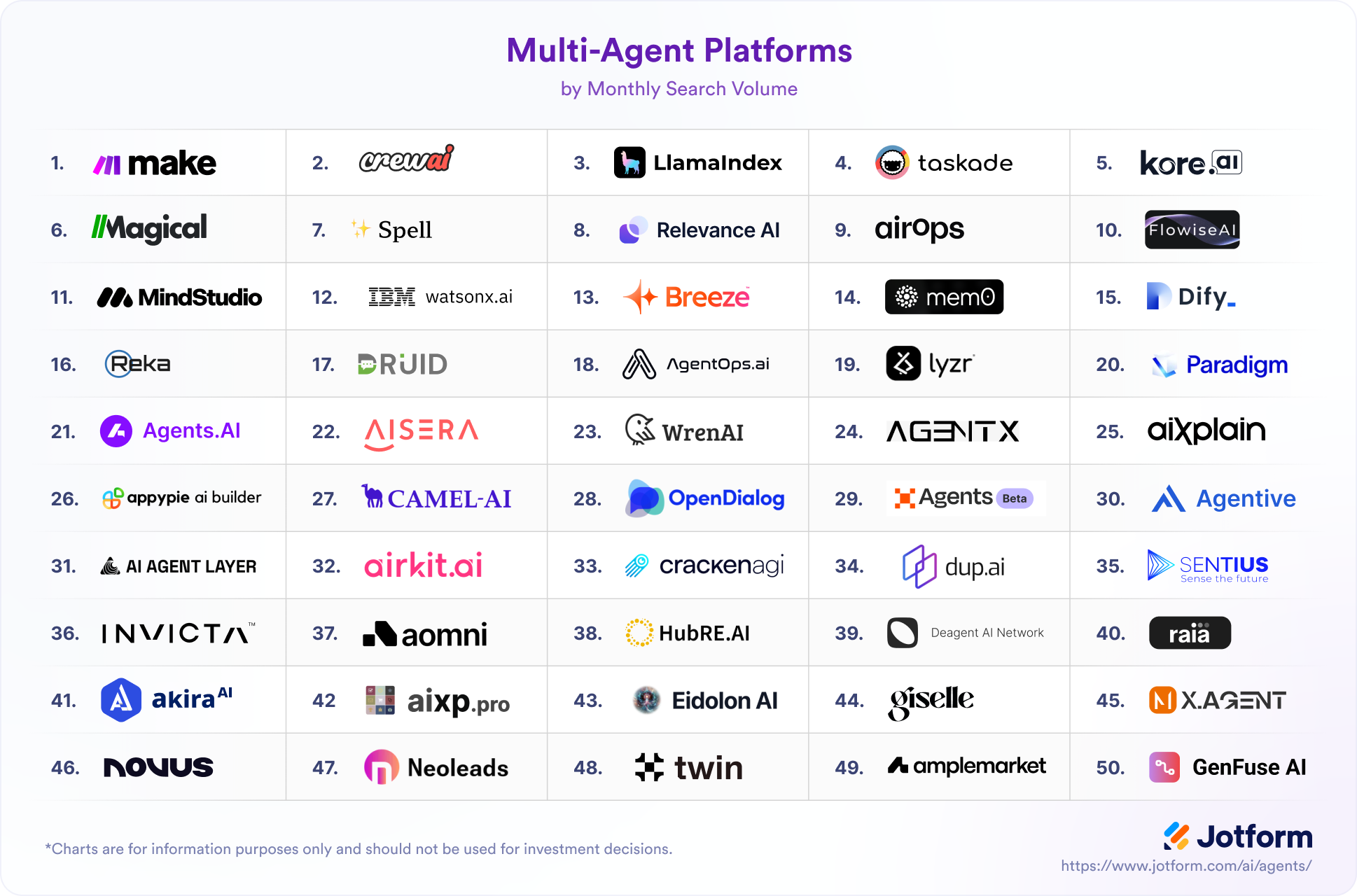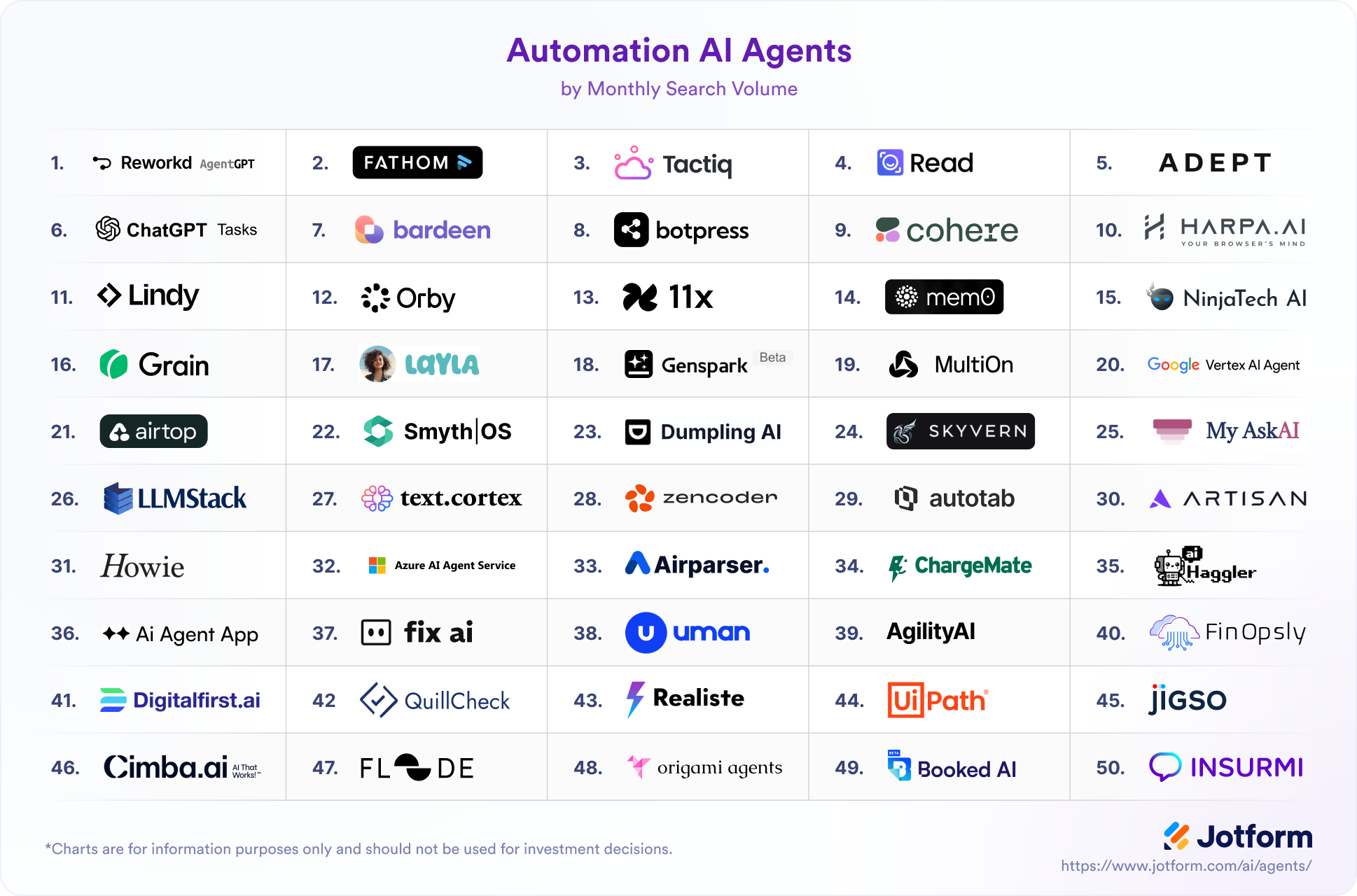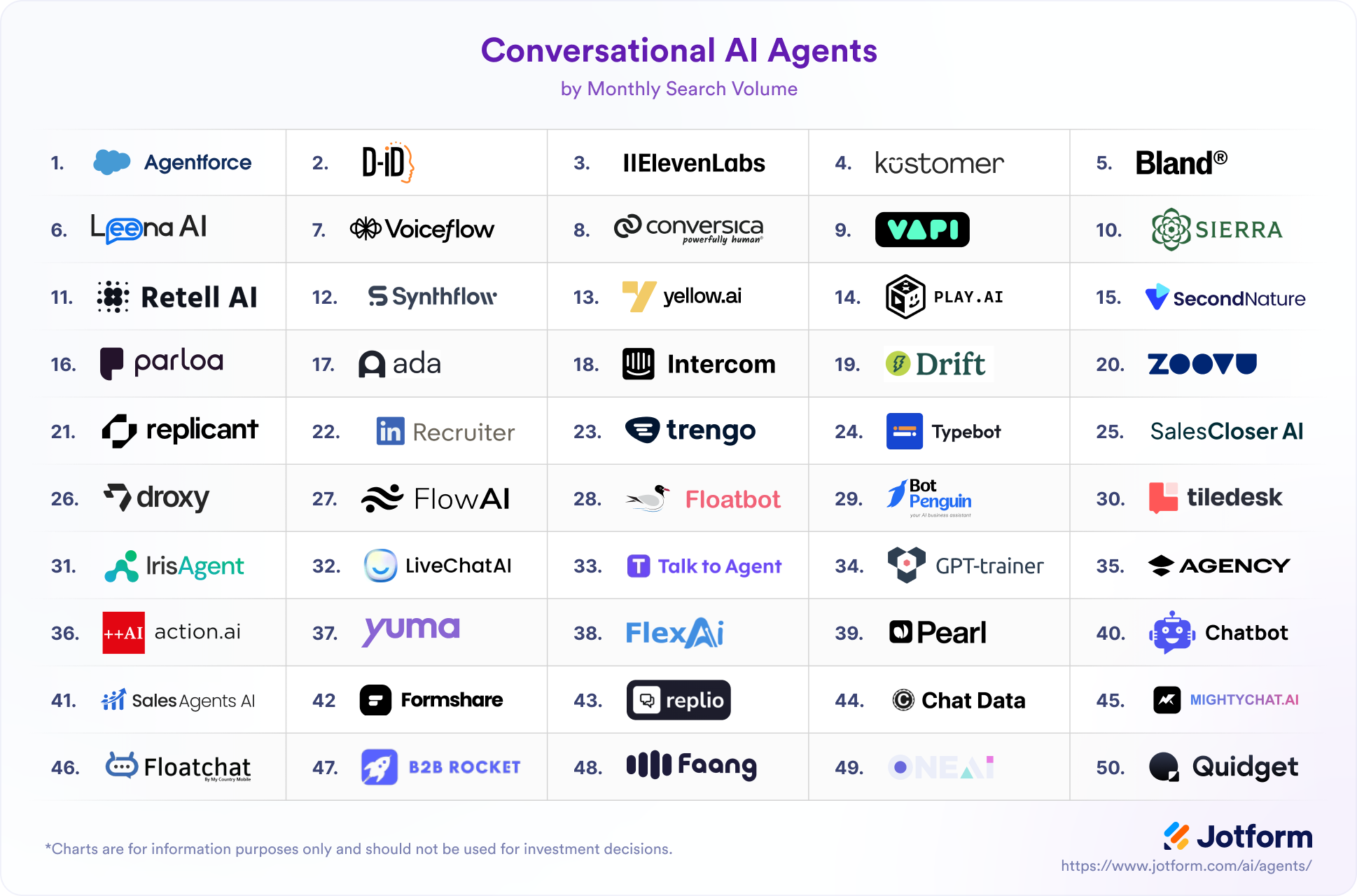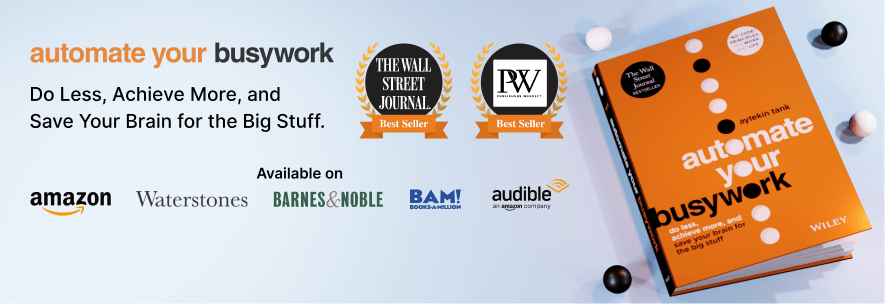Key types of AI agents
- Multi-Agent Platforms
- Automation AI agents
- Conversational AI agents
Artificial intelligence (AI) agents are transforming how we all interact with technology. These specialized systems are capable of rapidly perceiving their environment, processing information, and making decisions to achieve specific goals, and they can be found everywhere from healthcare and education to customer service and manufacturing.
They’ve become essential to modern life, automating repetitive tasks and making it easier to communicate. It’s one of the reasons the global AI market is expected to reach $826 billion in 2030 — more than triple its 2025 size.
For businesses in particular, understanding the types of AI agents and their unique roles is critical if you want to use them to their full potential. After all, McKinsey has found that companies with strong digital and AI capabilities consistently outpace those without in terms of generating value, and the gap is only getting bigger.
In this article, we explore a few of the most common types of AI agents, their benefits, and real-world examples of how they’re applied across industries.
Multi-Agent Platforms
Multi-Agent Platforms are designed to enhance teamwork between humans and machines. They use advanced data analysis to provide insights, identify trends, and offer recommendations — empowering users to make informed decisions. These agents are particularly valuable in sectors requiring nuanced problem-solving, such as healthcare, education, and research.
Advantages:
- Enhance productivity by offering data-driven insights and recommendations
- Enable seamless collaboration across remote teams
- Reduce decision-making time by analyzing complex datasets in real time
Limitations:
- Depend heavily on high-quality data to function effectively
- Require significant computational resources for real-time analytics
- Potentially increase reliance on technology, reducing human oversight
Example applications:
- Healthcare: Analyzes patient data alongside global research to identify rare conditions
- Project management: Integrates with tools like Slack to optimize team workflows
- R&D: Helps research teams analyze trends and predict outcomes, accelerating innovation
These agents often rely on techniques like distributed computing and real-time analytics to function effectively in dynamic environments. In the healthcare sector, for example, multi-agent platforms can cross-reference patient data with global databases to identify rare diseases or recommend cutting-edge treatments.
Automation AI agents
Automation AI agents focus on eliminating repetitive, time-consuming tasks to optimize operational efficiency. They rely on pre-programmed rules, robotic process automation, and machine learning algorithms to handle tasks ranging from data entry to complex logistical processes.
Advantages:
- Reduce operational costs and improve efficiency
- Minimize human error in repetitive tasks
- Scale easily to handle increased workload demands
Limitations:
- Limited adaptability in highly variable environments
- Initial implementation can be costly and resource-intensive
- May lead to workforce displacement, requiring reskilling efforts
Example applications:
- Supply chain: Predicts demand spikes using historical and market trends
- IT operations: Monitors systems, predicts outages, and deploys fixes autonomously
A key feature of automation AI agents is their adaptability. For instance, in supply chain management, they monitor inventory levels and predict demand spikes based on historical data and market trends to prevent stockouts and reduce wastage. Automation AI agents are also poised to fill critical industry gaps (such as the one the insurance industry is expected to face in the next 15 years as more than 400,000 positions go unfilled) by efficiently handling admin tasks, claims processing, and customer service.
Conversational AI agents
Conversational AI agents, including chatbots and virtual assistants, enable human-like interactions through advanced natural language processing technologies. They can understand context, interpret user intent, and generate relevant responses. They’re increasingly employed in customer service, marketing, and education to improve efficiency and enhance user experiences. In fact, Gartner predicts that one in 10 agent interactions will be automated by 2026.
Advantages:
- Improve customer satisfaction with 24/7 availability
- Enhance user engagement through personalized responses
- Reduce customer service costs significantly
Limitations:
- Struggle with complex queries requiring nuanced understanding
- Dependence on pre-trained datasets can introduce biases
- Limited support for lesser-known languages or dialects
Example applications:
- Customer service: Chatbots resolve common queries instantly, cutting response times
- Healthcare: Virtual assistants schedule appointments and provide mental health support
- Education: Adaptive learning platforms use conversational agents to customize lessons for students
Other common types of AI agents
Simple reflex agents
Simple reflex agents work by responding directly to environmental stimuli. They’re ideal for relatively straightforward scenarios that just need immediate reactions without memory or advanced processing.
Despite their simplicity, these agents are highly effective in environments with static rules, like home automation systems. That motion-activated light? That’s a typical application of a simple reflex agent.
Model-based reflex agents
Model-based reflex agents take simple reflex agents one step further by maintaining an internal representation of the environment. This allows them to make informed decisions by considering past and present conditions.
These agents are essential in fields like robotics and manufacturing, where real-time adjustments are critical to efficiency. For instance, robotic vacuum cleaners use model-based reflex agents to map a room, remember obstacles, and make sure they cover the entire area.
Goal-based agents
Goal-based agents prioritize achieving predefined objectives by analyzing potential actions and their outcomes. They’re widely used in AI systems that call for strategic planning, such as autonomous vehicles and logistics optimization.
The advanced decision-making capabilities of goal-based agents have led to their adoption in systems where achieving specific outcomes — such as minimizing delivery times or maximizing energy efficiency — is paramount. For example, in navigation systems, goal-based agents calculate the shortest and safest routes to a destination, factoring in real-time traffic data and road conditions.
Utility-based agents
Utility-based agents enhance goal-based decision-making by evaluating multiple factors to achieve the most desirable outcomes.
These agents use mathematical models to quantify how beneficial different actions will be, ensuring optimized decision-making. For instance, in energy management systems, utility-based agents adjust heating and cooling settings to balance comfort and cost-efficiency, reducing bills while maintaining optimal indoor temperatures.
Learning agents
Learning agents continuously evolve by analyzing data and incorporating feedback. They adapt to changing conditions and refine their decision-making processes over time.
The adaptability of these agents makes them invaluable in environments where conditions fluctuate or historical data significantly impacts future performance. For example, virtual personal assistants like the ones on phones (Siri, Gemini, and Bixby) learn user habits and preferences over time to provide more personalized and efficient assistance.
Hierarchical agents
Hierarchical agents structure tasks and decisions into layers, enabling them to efficiently manage complex, multi-step operations.
These agents are particularly valuable in scenarios that need high-level planning and low-level execution, such as autonomous vehicle navigation or multi-robot coordination. For example, in drone delivery systems, hierarchical agents manage tasks like plotting delivery routes, avoiding obstacles, and ensuring package security during transit.
How to leverage AI agents for business growth
Understanding the types of AI agents — from multi-agent platforms and automation agents to conversational and hierarchical systems — is essential if you want to choose the right tools for your specific applications. They all promise to enhance efficiency, decision-making, and user experiences, but each type offers unique benefits.
What’s more, with the rate at which AI technologies are advancing, the capabilities of these agents will only continue to grow. For instance, integrating reinforcement learning and advanced neural networks into AI agents opens new possibilities for adaptive, intelligent behavior. The potential applications are vast, from real-time translation in conversational agents to predictive maintenance in automation systems.
Photo by Michael Burrows




































Send Comment: